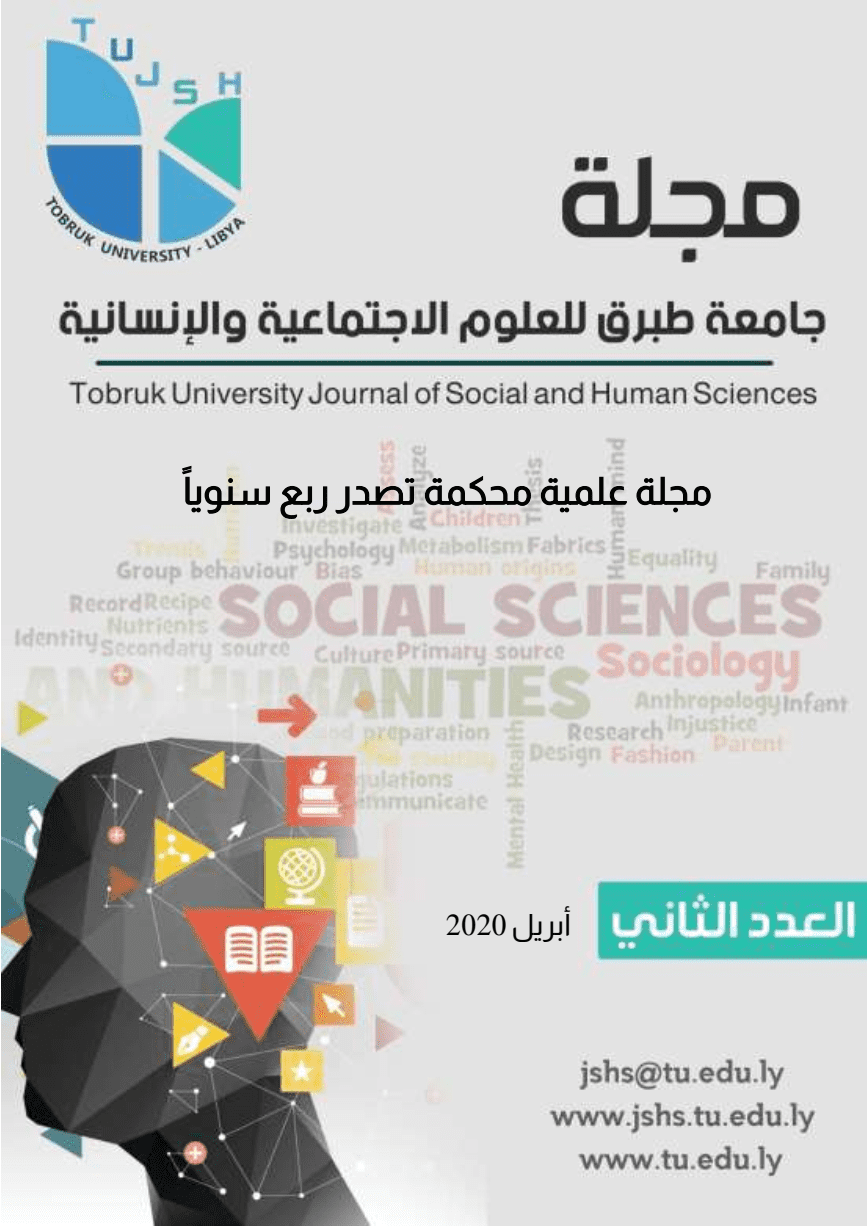The reality of faculty members’ use of open educational resources
Analytical study
DOI:
https://doi.org/10.64516/hmhna470Keywords:
Open educational resources, platforms, websites, faculty membersAbstract
The study aims to identify the reality of the use of open educational resources by faculty members at the University of Benghazi in their teaching performance. The research questions focus on a main question, which is: knowing the extent to which faculty members at the University of Benghazi rely on open educational resources in their teaching performance.In the study, the researcher used the descriptive method based on the analytical approach to study the attitudes of a sample of faculty members at the University of Benghazi. The study used the Statistical Package for the Social Sciences (SPSS) program to analyze the data collected by the questionnaire. The study concluded a number of results, the most important of which are:• Weak use of open educational resource platforms and websites by faculty members at the University of Benghazi, and thus the lack of publishing their lectures and scientific research through those open educational resources, and that the most obstacles that prevent faculty members from benefiting from educational resource platforms and websitesOpen is the lack of resources on the university’s website, due to the university’s failure to keep pace with the changes that have occurred in the field of scientific communication and the change in its traditional channels.
The study also presented a number of recommendations, the most important of which are as follows:
• The study recommended the need to introduce open educational resources among faculty members, and also recommended holding scientific seminars and workshops.• The need for university libraries and information institutions at the University of Benghazi to adopt a guide for using open educational resource platforms and websites to benefit from the scientific content available through them.
Downloads
References
(1) أحمد زيدان (2013) برامج "مووك" تحقق حلم الدراسة في أرقى الجامعات. استرجعت من
https://hunasotak.com/article/741 تم الإطلاع[23/8/2018]
(2) إعلان باريس لعام 2102 بشأن الموارد التعليمية المفتوحة. المؤتمر العالمي للموارد التعليمية المفتوحة لعام 2012 اليونسكو، باريس، 20-22 حزيران/يونيو 2012 إسترجعت من http://www.unesco.org/new/fileadmin/
MULTIMEDIA/HQ/CI/CI/pdf/Events/Arabic_Paris_OER_Declaration.pdf . تم الإطلاع [22/7/2018]
(3) جميل إطميزي. (17 سبتمبر 2015). ضرورة تبني الموارد التّعليميّة المفتوحة ( OER ) في المؤسّسات التّعليميّة والتّدريبيّة العربيّة.المجلة العربية للمعلومات (عدد خاص) مج 25.
(4) عجائب ثامر الفضلية (1436/1437هـ). تقرير ( الموارد التعليمية المفتوحة) لمادة تقنيات التعلم. مُقدم خلود. المملكة العربية السعودية. وزارة التعليم العالي.جامعة الإمام محمد بن سعود الإسلامية . كلية العلوم الاجتماعية. قسم مناهج وطرق تدريس. شعبة (p)..
(5) محمد عكة،جميل إطميزي (مارس2015).اتجاهات أعضاء الهيئة التدريسية نحو استخدام الموارد التعليمية المفتوحة(م.ت.م) في التعليم الجامعي: دراسة حالة لجامعة فلسطين الأهلية. Cybrarians Journal.(37)، أُسترجعت من
http://journal.cybrarians.info/index.php?option=com_content&view
=article&id=684:learning&catid=273:studies&Itemid=100 تم الإطلاع [27-5-2018 ] .
(6 ) منظمة الامم المتحدة للتربیة والعلم والثقافة اليونسكو.(2015).المبادئ التوجیهية للموارد التعلیمیة المفتوحة في التعلیم العالي.
(7) منظمة الامم المتحدة للتربیة والعلم والثقافة اليونسكو.(2016). دعم وضع وثيقة تقنينية لليونسكو بشأن الموارد التعليمية المفتوحة. المجلس التنفيذي الدورة التاسعة والتسعون بعد المائة.
8 Daniel E. Atkins John Seely Brown Allen L. Hammond, (2007). A Review of the Open Educational Resources (OER) Movement: Achievements, Challenges, and New Opportunities, Report to The William and Flora Hewlett Foundation, CALIFORNIA, USA,P4
9 MoniqueUdnaes,Gard Titlestad and Øystein Johannessen,(2015). LangOER consortiu موجز السياسة: المصادر التعليمية المفتوحة بلغتك الخاصة وأسلوبك الخاص .consortium,P4 استرجعت منhttp://langoer.eun.org/c/document_library/get_file?uuid=b6de29f3-d86b-4998-b8dc-1988fed70300&groupId=395028 تم الاطلاع] 23l7l2018[
10 Seongyoun Hong, and Insung Jung.(2016). Faculty Members' Instructional Priorities for Adopting OER. International Review of Research in Open and Distributed Learning. December – 2016.(6) Volume 17, DOI: https://doi.org/10.19173/irrodl.v17i6.2803
11 Sheng-Hung, Chung and Ean-Teng, Khor,(2012) Framework For Development OF OER-BASED Learning Materials, Wawasan Open University.
12 Priyanaka Singh, Open Educational Resources (OER) and its role in higher education to improve the quality of education,International Journal of Academic Research and Development, Volume 2; Issue 5; September 2017; Page No. 474-476.
13Jan Hylén,(2007),OpenEducational Resources: Opportunities and Challenges, Paris, France,p2
14 Wiley, D., Hilton, J. L., Ellington, S., & Hall, T. (2012). A preliminary examination of the cost savings and learning impacts of using open textbooks in middle and high school science classes. The International Review of Research inOpenandDistanceLearning.13(3).Retrievedfrom http://www.irrodl.org/index.php/irrodl/article/view/1153/2256تم الاطلاع[18/7/2018] DOI: https://doi.org/10.19173/irrodl.v13i3.1153
5 William & Flora Hewlett Foundation.Education.Open Educational Resources,. Available at https://hewlett.org/strategy/open-educational-resources/ Accessed On, . [22/8/2018]
Downloads
Published
Issue
Section
License
Copyright (c) 2020 د. رجاء حسين الحاسي (Author)

This work is licensed under a Creative Commons Attribution 4.0 International License.








